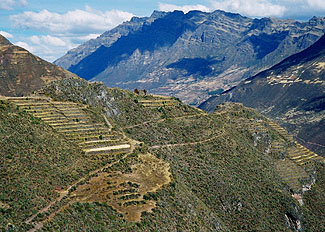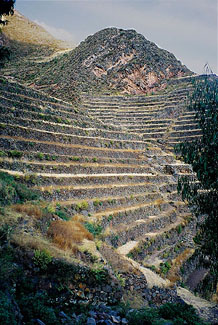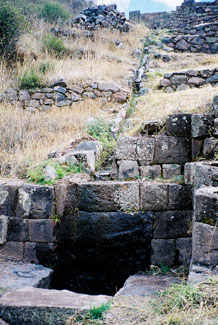|
|
|||||
| Terracing served an agricultural purpose at nearly every site. Throughout the Andes the hillsides were transformed into arable land. | |||||
| The
population of the villages and towns required food to eat. In some cases
the religious nature of the site meant that many more inhabitants were
involved in civic or religious duties than were actually farming.
Agriculture needed to be efficient and productive.
|
|
||||
| The climate of the Cuzco and Sacred Valley area is that of a high dry mountain environment. Directional aspect, solar warming, and diurnal winds created microclimates that the Inca took advantage of. Higher, cooler terraces were used for more cold resistant crops while lower, sheltered, or sunny terraces were used for less tolerate crops. As we climbed up through the terraces at many sites, the subtle climate changes were noticeable in the air temperatures and native plants growing around us. |
|
||||
| The pictures to the right show terraces with different aspects, two different versions of steps between levels, and a water channel running down through the levels. One set of steps is made of stones cantilevered out of the retaining wall and one is a steep but conventional stair leading up to a structure on a ridge. |
|
||||



